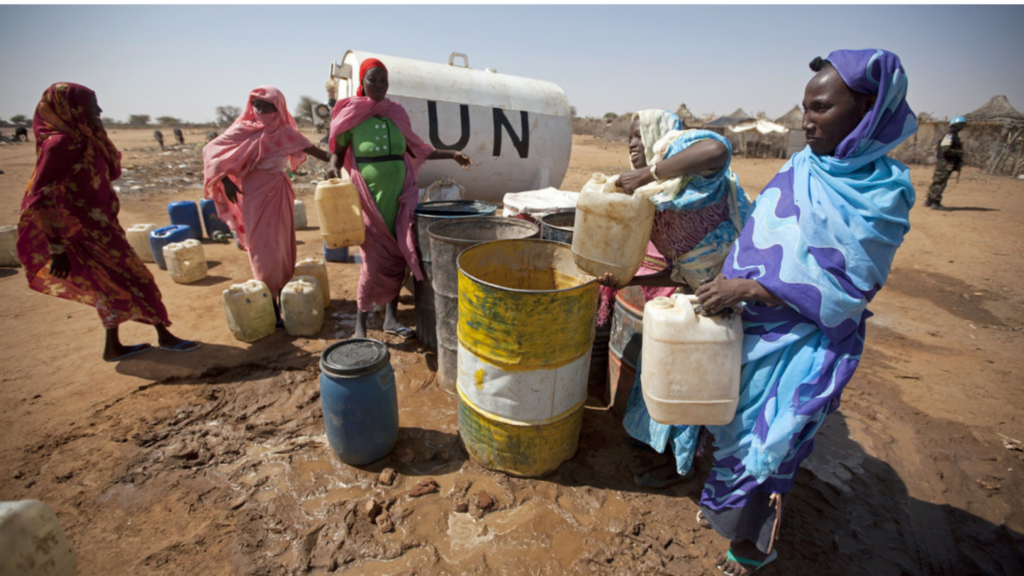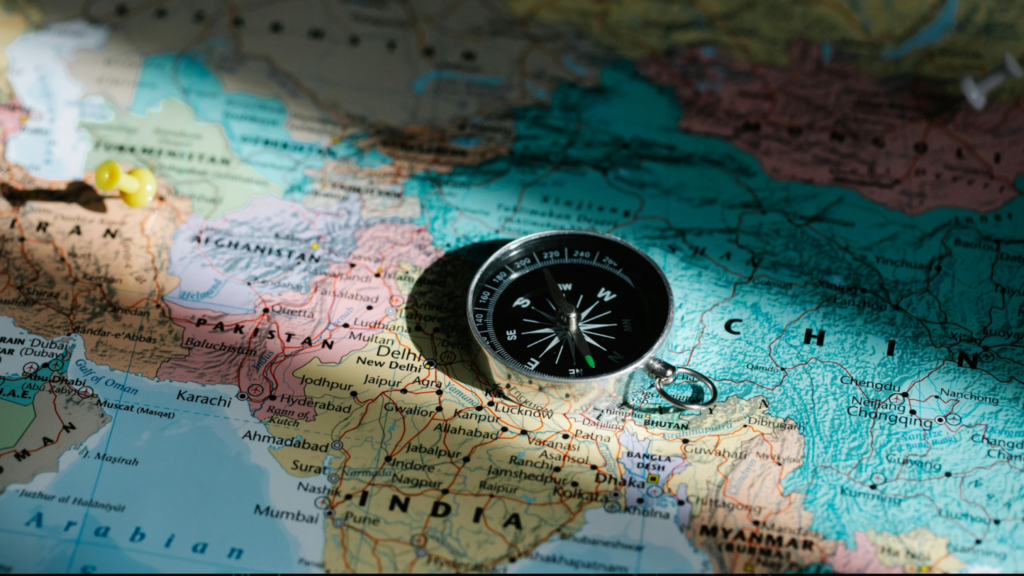The Rohingya Crisis – Decades of Persecution Resulting in the Largest Refugee Settlement in the World
The crisis the Rohingya people of Myanmar find themselves in is underreported, not widely understood and lacks the international attention it deserves. This situation must be brought to the attention of people around the world and demands international cooperation if a satisfactory resolution is to be reached.
‘I have no doubt that the Rohingya people have always been one of, if not the, most discriminated people in the world’ – António Guterres, UN Secretary-General, July 2018
A Brief History of the Origins and Persecution of the Rohingya
The history of the Rohingya in Rakhine, a state in Myanmar bordering Bangladesh, can be traced back to 788 CE when Arab merchants brought Islam to the region. It was, however, the mass migration of Bengali Muslims, encouraged by the British Empire for labor during the colonial period, that increased their size considerably. The Muslim population in Rakhine doubled between 1880-1930, with the share now standing at around a third of the total.
The erosion of the Rohingya’s civil rights began after the military (Tatmadaw) coup of 1962 with refugee crises occurring as a result of military operations and ethnoreligious violence involving mass rape, murder and destruction of villages. After ‘Operation Dragon King’ in 1978, which aimed to remove supposed foreigners (Rohingya) from Myanmar, the 1982 citizenship law came into effect classifying the Rohingya as ‘illegal foreigners’ making them stateless. As a result, another military operation called ‘Clean and Beautiful Country’ occurred in 1991-1992, causing a further refugee crisis.
More recently, violence has broken out in retaliation to a murder involving rape committed by Rohingya men in 2012; resulting in more than 140 000 Rohingya fleeing to ‘internally displaced person’ camps. Following anti-Muslim rhetoric by nationalist Buddhist monks, this violence has continued leading to 66 000 refugees fleeing to Bangladesh from October 2016 to February 2017.
The continued persecution, and refusal of Burmese authorities to recognize the Rohingya’s as people, means that for decades they have not had access to Education, Health Care or Human Rights, creating a sustained humanitarian crisis.
The 2017 Crisis
On 25th August 2017, a Rohingya insurgent group claimed responsibility for attacks on military outposts which resulted in the fatalities of 12 personnel. These attacks resulted in a violent military crackdown which led to the biggest refugee crisis the Burma-Bangladesh border has witnessed (see below graphs), making the Extended Kutupalong refugee site the largest of its kind in the world.
A report published in the Lancet Planetary Health journal shows the severity of the crackdown. The survey contacted various Rohingya leaders who had fled to Bangladesh from different hamlets, asking questions about their experience.
As shown in the above graph, a high percentage of leaders experienced acts of violence and destruction whilst fleeing to Bangladesh. In addition to this, the military and border patrol police used helicopters, speed boats, tanks and trucks to clear Rohingya sites, showing the destructive force used during the crackdown.
The Situation Now
The refugee site is in an area that is prone to cyclones and monsoons, where the risk of an outbreak of deadly disease is enormous. Alongside this, human trafficking, lack of safety for women and girls and lack of services for those in need put the refugees in a precarious position.
Whilst praise is due to the host community for welcoming the Rohingya; they are subject to vast amounts of pressure. Most locals are dependent on daily labor, but both job opportunities and wages are falling due to increased labor supply. Increased demand for goods and services compounds this by causing price hikes.
A report by the UNDP shows the ‘enormous’ environmental impact of the densely populated refugee site. They highlight detrimental effects on surface water, soils and terrain, natural forests, wildlife; and marine and freshwater ecosystems, to name a few.
Conditions in Burma, on the other hand, have not changed, with the UNHCR stating that repatriation is not viable as requirements concerning the safety of the Rohingya are not sufficient. The BBC has also reported on continued destruction of villages which are replaced by fenced-off ‘transit camps’ equipped with armed guards and watchtowers. Returning refugees will have to stay in these camps, which are comparable to concentration camps, for at least two months upon arrival.
The situation the Rohingya Refugees, Host Communities and Environment are in demands a resolution to this issue.
Policy Recommendations
The UNHCR has provided humanitarian support in the camps and has also relieved stress on local ecosystems by providing refugees with alternative fuel to replace wood and reforesting the area. There are, however, some often-overlooked policy recommendations to improve the immediate condition that the Refugees and Host Community find themselves in. Through guaranteed access to public facilities and services, the Bangladesh government could ensure health care, education and working rights to the Rohingya to prevent another lost generation; with current illiteracy at over 70%.
Whilst a domestic policy choice, commitment from the World Bank, UN and Donors to fund this could provide the support needed to incorporate the Rohingya in the already strained Host Community. Funding could not only support but improve the quality of local services which would be a massive benefit for the Host Communities as well.
In the long-term, there must be alternative options to repatriation given the current conditions in Myanmar and continued persecution after previous repatriations. Third country repatriation is an option, with Malaysia generously taking in 150 000 refugees and Canada showing some interest.
In addition to this, clear human rights violations by the Tatmadaw cannot be ignored. The UN has highlighted that businesses linked to the Tatmadaw should face international embargos to limit their financial support.
Whilst relatives and destroyed communities cannot be replaced, reparations for the Rohingya and accountability of the perpetrators are essential to disincentivize discrimination of this kind happening again.
The Rohingya people have faced persecution for decades resulting in multiple lost generations with no clear resolution in sight; it is time for the international community to work with them to find a long-term solution.
References
- United Nations Secretary-General. 2020. Opening Remarks At Press Encounter With President Of The World Bank, Jim Yong Kim. [online] Available at: <https://www.un.org/sg/en/content/sg/speeches/2018-07-02/remarks-press-encounter-world-bank-president-jim-kim> [Accessed 20 August 2020].
- Tan, A., 2009. A Handbook Of Terrorism And Insurgency In Southeast Asia. Cheltenham: Edward Elgar, p.327.
- org. 2020. Towards A Peaceful, Fair And Prosperous Future For The People Of Rakhine, Advisory Commission On Rakhine State. [online] Available at: <http://www.rakhinecommission.org/app/uploads/2017/08/FinalReport_Eng.pdf> [Accessed 20 August 2020].
- The Rohingya people of Myanmar: health, human rights, and identity – Syed S Mahmood, Emily Wroe, Arlan Fuller, Jennifer Leaning
- UN News. 2017. UN Report Details’ Devastating Cruelty’ Against Rohingya Population In Myanmar’s Rakhine Province. [online] Available at: <https://news.un.org/en/story/2017/02/550802-un-report-details-devastating-cruelty-against-rohingya-population-myanmars> [Accessed 25 August 2020].
- BBC News. 2020. What You Need To Know About The Rohingya Crisis. [online] Available at: <https://www.bbc.co.uk/news/world-asia-41566561> [Accessed 25 August 2020].
- Parmar, P., Leigh, J., Venters, H. and Nelson, T., 2019. Violence and mortality in the Northern Rakhine State of Myanmar, 2017: results of a quantitative survey of surviving community leaders in Bangladesh. The Lancet Planetary Health, 3(3), pp.e144-e153.
- Refugees, U., 2020. World’s Biggest Refugee Settlement Gets Biggest Ever Waste Facility. [online] UNHCR. Available at: <https://www.unhcr.org/uk/news/briefing/2019/2/5c540fe74/worlds-biggest-refugee-settlement-gets-biggest-waste-facility.html> [Accessed 20 August 2020].
- int. 2020. WHO Appeals For International Community Support; Warns Of Grave Health Risks To Rohingya Refugees In Rainy Season. [online] Available at: <https://www.who.int/bangladesh/news/detail/29-03-2018-who-appeals-for-international-community-support-warns-of-grave-health-risks-to-rohingya-refugees-in-rainy-season> [Accessed 22 August 2020].
- Refugees, U., 2020. Taking On Traffickers At The World’s Largest Refugee Site. [online] UNHCR. Available at: <https://www.unhcr.org/uk/news/stories/2019/12/5ddbafa04/taking-traffickers-worlds-largest-refugee-site.html> [Accessed 22 August 2020].
- Refugees, U., 2020. Rohingya Emergency. [online] UNHCR. Available at: <https://www.unhcr.org/uk/rohingya-emergency.html> [Accessed 22 August 2020].
- Brac Institute of Governance and Development. 2020. Self-Reliance Situation Of Host Communities In Cox’S Bazar – Brac Institute Of Governance And Development. [online] Available at: <https://bigd.bracu.ac.bd/study/self-reliance-situation-of-host-communities-in-coxs-bazar/> [Accessed 22 August 2020].
- 2018. Report On Environmental Impact Of Rohingya Influx – Executive Summary – Bangladesh. [online] Available at: <https://reliefweb.int/report/bangladesh/report-environmental-impact-rohingya-influx-executive-summary> [Accessed 22 August 2020].
- Refugees, U., 2019. UNHCR Statement On Voluntary Repatriation To Myanmar. [online] UNHCR. Available at: <https://www.unhcr.org/news/press/2019/8/5d5e720a4/unhcr-statement-voluntary-repatriation-myanmar.html> [Accessed 22 August 2020].
- BBC News. 2019. Camps Built On Destroyed Rohingya Villages. [online] Available at: <https://www.bbc.co.uk/news/av/world-asia-49639763> [Accessed 22 August 2020].
- UN News. 2020. Greater Progress Needed To Ensure Safe Return Of Displaced Rohingya: UN Refugee Agency Chief. [online] Available at: <https://news.un.org/en/story/2020/03/1058521> [Accessed 25 August 2020].
- Gorlick, B., 2019. The Rohingya Refugee Crisis: Rethinking Solutions and Accountability. SSRN Electronic Journal.



